De Havilland Mosquito B.Mk.XVI
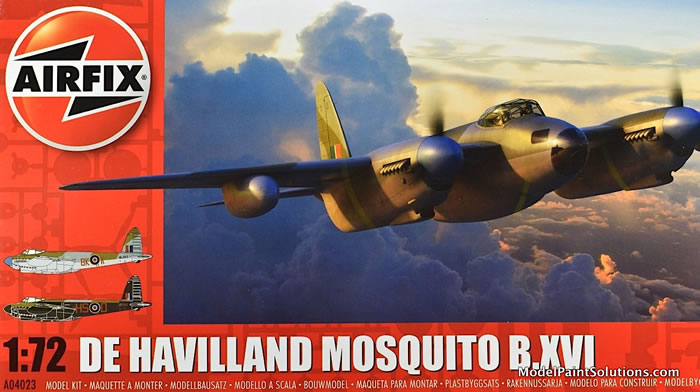
Airfix, 1/72 scale
S
u m m a r y : |
Description and Item No.: |
Airfix Kit No. AO4023 - De Havilland Mosquito B.Mk.XVI |
Contents and Media: |
105 parts in grey plastic, 15 in clear, and one decal sheet with markings for two options. |
Price: |
GBP£23.99 EU Price (GBP £19.99 Export Price) plus shipping at Hannants |
Scale: |
1/72 |
Review Type: |
First Look |
Advantages: |
Descent level of detail; high quality and fine surface textures; sensible parts breakdown. |
Disadvantages: |
Inaccurate bomb bay and doors; anti-shimmy tail wheel does not have the groove down the middle. |
Recommendation: |
I am pretty impressed by this kit. It certainly looks like the nicest Airfix kit I’ve seen in the box. How does it compare to Tamiya? Well, that is kind of apples and oranges, eh? Those that expect every kit to be uber-detailed will probably be disappointed, but for those of us “enthusiast” modelers, a really nice model will result. I can’t wait to crank up the 633 Squadron theme and get to work! |
Reviewed by Jim Bates
Photography by Dr. Strangebrush

Background
The de Havilland DH.98 Mosquito is a British twin-engined, shoulder-winged, multi-role, combat aircraft, introduced during the WWII. Unusual in that its frame was constructed mostly of wood, it was nicknamed the "Wooden Wonder"or "Mossie.” Lord Beaverbrook, Minister of Aircraft Production, nicknamed it "Freeman's Folly", alluding to Air Chief Marshal Sir. Wilfrid Freeman who defended Geoffrey de Havilland and his design concept against orders to scrap the project. By 1941, it was one of the fastest operational aircraft in the world.
The Mosquito flew with the Royal Air Force (RAF) and other air forces in the European, Mediterranean, and Italian theaters. The type was also operated by the RAF in the Southeast Asia theater and by the Royal Australian Air Force based in the Halmaheras and Borneo during the Pacific War. During the 1950s, the RAF replaced the Mosquito with the jet-powered English Electric Canberra.
Adapted from Wikipedia
She’s a Beauty!
I have to admit, the Mosquito is the most beautiful twin bomber/fighter-bomber every flown. Heck, it might be the most beautiful piston-powered aircraft to ever take to the air (Sorry for cheating on you,Spitfire…). My introduction to the Mosquito as a child was the plane on display at the now Canada Aviation and Space Museum in their old World War Two hangars at Rockcliffe, Ontario. A bomber built in Canada and made of wood? Totally cool! But it wasn’t until the late 80’s that I got to see Kermit Week’s Mosquito TT.35 in the air.
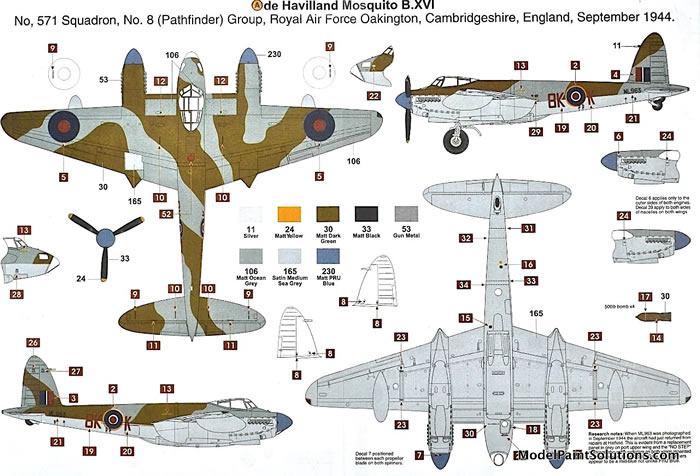
More recently I’ve been obsessed with our local Mosquito Mk. III at Paul Allen’s Flying Heritage Collection. It has been so much fun seeing this Mosquito come together and I certainly enjoyed it every time I got to see it in the air. When Airfix announced a new tool 1/72 Mosquito, I was very excited. Right now, you might be asking…”Hey, Jim, Tamiya has a great Mosi, why are you so excited by this kit?” Well, there is a line in the sand. Almost all 1/72 Mosquitos have been early Mosquitos with single-stage Merlins, but the later aircraft with twin-stage Merlin Mosquito has only been done in 1/72 by Matchbox and resin conversions of variable quality. I had high hopes for a nice twin-stage Merlin so I could finally build the famous F for Freddie.
F for Freddie
American aviation fans love the story of the Memphis Belle which ostensibly was the first US bomber to finish 25 missions. But it was a Mosquito that flew the most missions of any Allied bomber.
Mosquito B.IX LR503 “F for Freddie” flew a whopping 213 Ops before being sent to Canada.
Built in 1943, this Mosquito first served with the Pathfinders of 109 Squadron flying its first Operation on June 21, 1943. In 1944, it was transferred to 105 Squadron, and flew its 100th operation on June 3, 1944. On April 10, 1945, Freddie flew its 213th and last Op and was then flown to Canada for a Victory Bond Drive.
Sadly, on May 10, 1945, pilot Maurice Briggs misjudged a low pass in Calgary and hit the steel anemometer tower and flag pole on top of the control tower killing himself and navigator John Baker. It was a tragedy that two highly decorated aviators were killed and such a historic aircraft destroyed.
The Kit:
If you are in the market for a twin-Merlin Mosquito, I can confidently state this kit is the best in the scale. To be fair, however, lapping a Matchbox kit from 1982 shouldn’t be difficult. One slight benefit of the Matchbox kit is it had options to be built as both a twin-stage night fighter and a bomber.
The Airfix Mosquito was released in 2020 in the UK but has only recently appeared in the US market. When I heard it was on the shelf at Skyway Model Shop, I just had to have one even after making a New Year’s Resolution not to buy a new kit until the Nationals in Omaha.
As usual, Airfix has done a nice job of presentation with some nice artwork on the box top. The instructions are typical for Airfix; clear and well laid out. All the parts are crisply modeled, no flash is featured, and the only sink mark in my sample was right in the center of the pilot (poor guy). However, I would suggest you review your kit before purchase, as a friend picked up a Mosquito in which most of the fuselage was mis-molded. Airfix really needs to get their quality control fixed. One piece of good news is while Airfix is still using a soft plastic, the plastic here seems a tad bit harder and crisper than recent new tools. Maybe I’m not picky enough, but the panel lines seem fine to me. And with the Mosquito being mostly wood, there are substantially fewer panel lines than a metal airplane.
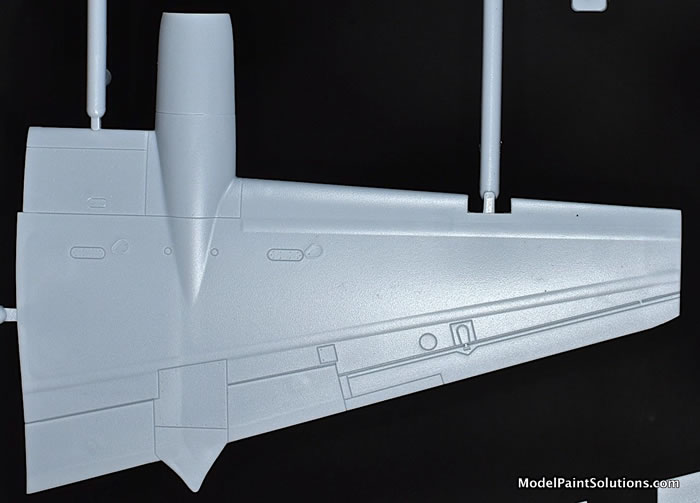
The cockpit is well equipped, with sidewall detail on the fuselage halves and a subassembly that includes the cockpit, bomb bay and spar. This is one of the few 1/72 Airfix with raised detail on the instrument panel. Though as is usual with Airfix, a decal provides the dials. No seatbelts are included.
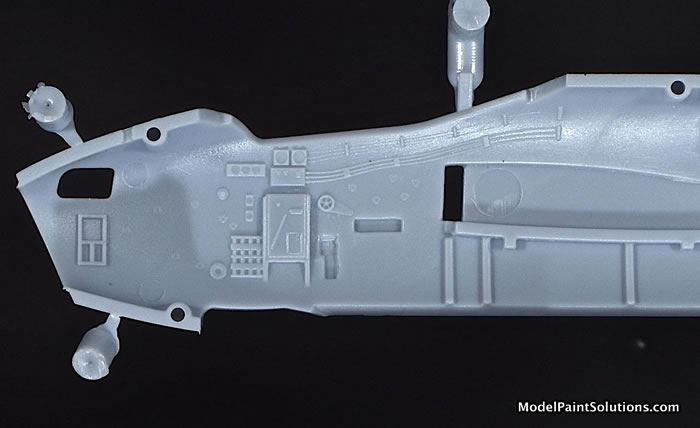
There are some really nice design features here including molded masks for the wheel wells, clear wingtips, and some of the interior parts have little arrows modeled on them to confirm proper placement.
Unlike the Tamiya kit, a full bomb bay is included along with extra fuel tanks and four nice RAF 500 pound bombs. Detail here is good, but not spectacular.
The clear parts look quite nice and include two styles of late mosquito canopies, one with a navigation bubble and one without. Both bulged and curved side windows are included.
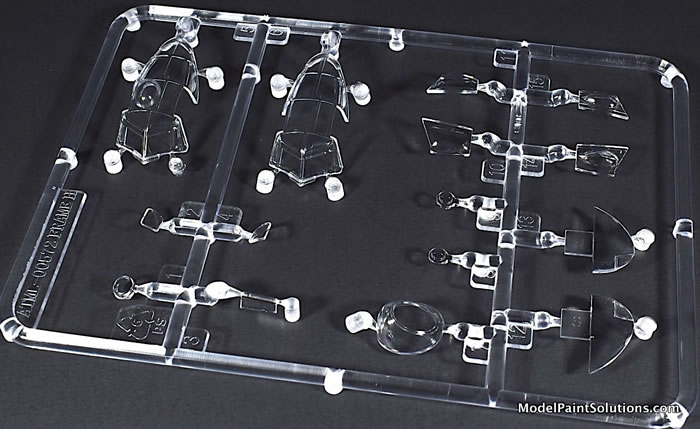
However, everything is not perfect. Airfix scanned a TT.35 Mosquito and the bomb doors have the target tug gear molded on. Also, the rear fairing of the bomb bay is that of a TT.35 and not a B.XVI. Sanding will take care of the detail, but the fairing will have to be built up by the modeler with plastic card or epoxy putty.

Additionally, the tail wheel looks nice, but should have a split down the middle for an anti-shimmy tailwheel. Since I’m converting mine to a B.IX, I will have to source a set of non-bulged bomb bay doors (wish Airfix had included these).
Markings:
Two decal options are included: a 105 Squadron Mosquito in Dark Green and Ocean Grey over black and one from 571 Squadron in the day fighter scheme.

The second option has some nice natty blue spinners, but neither aircraft has any nose-art.
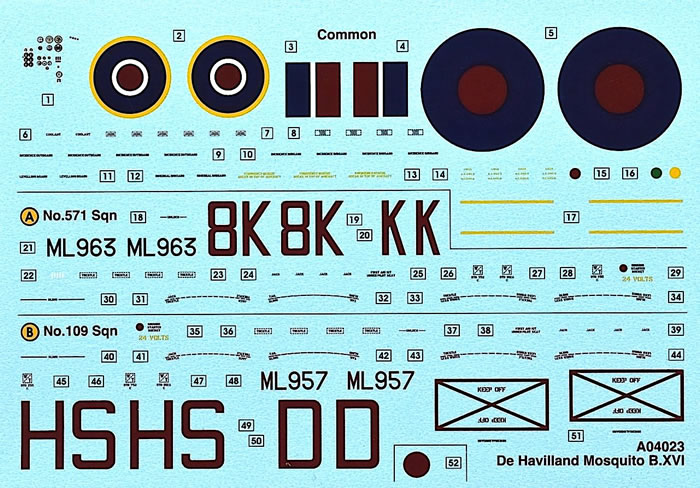
The decals are printed by Cartograph, and as usual look excellent.
I am pretty impressed by this kit. It certainly looks like the nicest Airfix kit I’ve seen in the box. How does it compare to Tamiya? Well, that is kind of apples and oranges, eh? Those that expect every kit to be uber-detailed will probably be disappointed, but for those of us “enthusiast” modelers, a really nice model will result. I can’t wait to crank up the 633 Squadron theme and get to work!
Thanks for reading along,
Jim
For more on this review visit Modelpaintsolutions.com
Review Text and Images Copyright © 2022 by Model Paint Solutions
Page Created 27 January, 2022
Last updated
27 January, 2022
Back to HyperScale Main Page
Back to Reviews Page

|
Home
| What's New |
Features |
Gallery |
Reviews |
Reference |
Forum |
Search